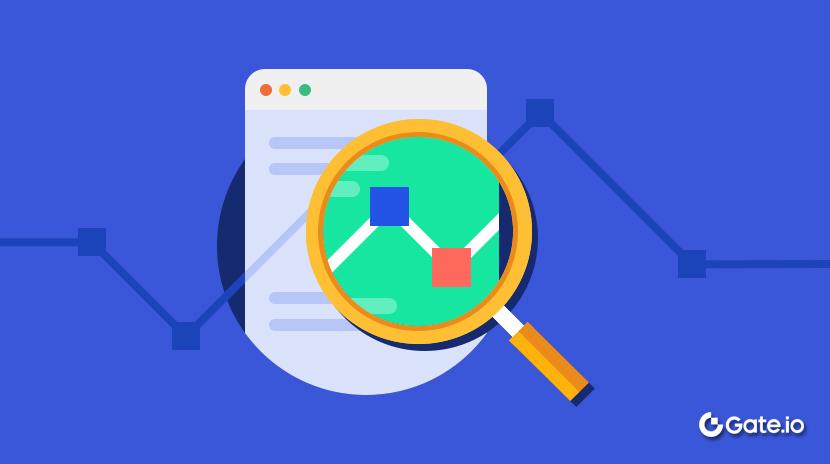أطلقت أرخام منصة للتداول الفوري. إلى أين ستتجه نموذج أعمالها؟
مقدمة
وسط التطور السريع للعملات المشفرة وتكنولوجيا البلوكشين، أصبحت أدوات تحليل البيانات على السلسلة لا غنى عنها في السوق الرقمي للأصول. تكشف هذه الأدوات عن تدفقات المعاملات وتوزيعات الأصول ومشاعر السوق وتساعد المشاركين في السوق عن طريق توفير الدعم للمستثمرين والباحثين والمؤسسات التنظيمية ببيانات شفافة ودقيقة في الوقت الحقيقي، مما يعزز التشغيل السوقي بشكل أكثر كفاءة وعادلية.

المصدر: FinTechFrontiers
وفقا لتقرير عام 2024 "العملات الرقمية والبنية التحتية المالية على السلسلة" الذي نشره بنك التسويات الدولية (BIS) ، تجاوز إجمالي القيمة السوقية العالمية لأصول التشفير 4.2 تريليون دولار في الربع الأول من عام 2024 ، حيث يمثل حجم المعاملات على السلسلة 67٪ - أي ما يقرب من ثلاثة أضعاف نسبة 23٪ المسجلة في عام 2020. وراء هذه الزيادة في تدفقات البيانات ، ظهر سوق تحليل البيانات على السلسلة ، ينمو بمعدل نمو سنوي مركب (CAGR) يبلغ 28.3٪ (مصدر البيانات: MarketResearchFuture ، MRFR ، 2024).

المصدر: رسمي
استنادًا إلى ما تم ذكره أعلاه، فإن عملية تجاريّة أدوات تحليل البيانات على السلسلة أيضًا تدخل تدريجيًا مرحلة جديدة. وبشكل خاص، مع إطلاق Arkham لمنصة التداول الفورية الخاصة به، فقد مر نموذج أعمال أدوات البيانات على السلسلة بتحول كبير، متجهًا نحو منصات مالية مدفوعة بالبيانات. ستحلل هذه المقالة التطور الحالي لأدوات البيانات على السلسلة وتستكشف تطور نماذج الأعمال المستقبلية.
المناظر الطبيعية لأدوات البيانات على السلسلة
تعريف ودور تحليل البيانات على السلسلة
تشمل تحليل البيانات على السلسلة الكتلية استغلال أساليب متقاطعة الأنظمة والآليّة والمرئية لإجراء تحليل عميق لمعاملات سلسلة الكتل، وتنفيذ العقود الذكية، وسلوك المستخدمين. إنها تعمل كـ "أشعة سينية رقمية" لسوق العملات المشفرة، مما يتيح تتبع تدفقات الأموال في الوقت الحقيقي، وأنشطة التداول، واتجاهات السوق على سلسلة الكتل، مع كشف أنماط سلوك التجار والمستثمرين المؤسسيين.
قيمة أدوات البيانات على السلسلة تكمن في قدرتها على توفير بيانات سوق مفcentralized وشفافة، مما يتناقض بشكل واضح مع غموض الأسواق المالية التقليدية. ونتيجة لذلك، تساعد بيانات السلسلة التجار الأفراد في الحصول على إشارات سوق دقيقة وتساعد المؤسسات والهيئات التنظيمية في الإشراف على السوق ومراقبة المخاطر.
نظرة عامة على أدوات البيانات الرئيسية على السلسلة
حالياً، توجد العديد من منصات البيانات على السلسلة الجيدة المعروفة، تقدم خدمات مخصصة متنوعة تلبي احتياجات المستخدمين المختلفة. بينما تختلف هذه المنصات في الوظائف ونماذج الأعمال، إلا أنها تعزز بشكل جماعي اعتماد وتطبيق البيانات على السلسلة.
تطور تكنولوجيا تحليل البيانات على السلسلة
الجيل الأول (2016-2019): ممثلة بواسطة إثرسكان، قدمت هذه المستكشفات الأولية للبلوكشين وظائف الاستعلام الأساسية عن المعاملات.
الجيل الثاني (2020-2022): بقيادة تحليلات دوني، قدمت هذه الحقبة استعلامات مخصصة معتمدة على SQL، مما يتيح للمستخدمين إنشاء لوحات تحكم شخصية.
الجيل الثالث (2023 – الحاضر): يتميز بمنصات التحليل الذكية التي تعمل بالذكاء الاصطناعي، كما يتمثل في محرك Arkham Ultra وشبكة أوراق Nansen 2.0.

وفقًا لتقرير ”منحنى نضوج تقنيات أدوات تحليل البيانات على السلسلة” الذي نشرته مركز أبحاث ستانفورد لبلوكتشين في جامعة ستانفورد في يونيو 2024، يعتبر الجيل الرابع دخول الصناعة إلى مرحلة حيث تتطور ”التشغيل الذكي” و”تكامل التداول” موازيًا. جرى استطلاع 312 مستخدمًا مؤسسيًا في التقرير، حيث أشار 89% منهم إلى أن ”إنتاج إشارات التداول في الوقت الحقيقي” هو العامل الرئيسي في اختيار أداة تحليل.
أدوات بيانات سلسلة الكتل الرائدة
دوني أناليتكس: معروفة بقدراتها القوية في الاستعلام والتصور، تسمح دوني للمستخدمين بتخصيص الاستعلامات بحرية وتقديم نتائج التحليل من خلال رسوم بيانية بديهية. يجعلها انفتاحها ومرونتها منصة مفضلة لعلماء البيانات والمطورين.

المصدر: Cryptonary
تحليلات Footprint: يركز Footprint على توفير للمستخدمين لوحات بيانات تفاعلية سهلة الاستخدام. من خلال تبسيط العمليات وتوفير واجهة سهلة الاستخدام، يمكنها للمستخدمين فهم البيانات على السلسلة بسهولة، مما يجعلها مناسبة بشكل خاص للمستثمرين بدون خلفية تقنية.

المصدر: رسمي
نانسن: تختص نانسن في تحليل السلوك على السلسلة الرقمية المتعلقة بالعقود الذكية والمستثمرين "الحوت". يوفر ميزة تتبع "الأموال الذكية" للمستخدمين رؤى حول تدفقات الصناديق المؤسسية واستراتيجيات التداول، مما يساعد المستثمرين في تحديد اتجاهات السوق المحتملة.

المصدر: رسمي
تلعب هذه المنصات دورًا حاسمًا في تحليل البيانات على السلسلة الرئيسية، لكن نماذج عملها تختلف. على سبيل المثال، تعتمد Dune وFootprint على نموذج الاشتراك، بينما يعتمد Nansen بشكل أكبر على تقارير البيانات المخصصة، ويقدم حلول مصممة خصيصًا للعملاء المؤسسيين.
تحديد موقع سوق آركهام
Arkham هي واحدة من المنصات المبتكرة القليلة في السوق التي تدمج تحليل البيانات على السلسلة مع التداول المالي. على عكس المنصات التقليدية مثل Dune و Footprint و Etherscan، يتم وضع Arkham ليس فقط كمزود للبيانات. أدى إطلاق منصة التداول الفوري إلى كسر الحواجز التقليدية بين أدوات البيانات والتداول المالي. يمكن للمستخدمين الاستفادة من بيانات المنصة لتتبع عناوين "الأموال الذكية" واتخاذ قرارات الاستثمار مباشرة بناء على هذه المعلومات. في المستقبل ، سيتم ربط البيانات والتداول بسلاسة ، مما يتيح عمليات سوق أكثر كفاءة.
استكشاف نماذج أعمال أدوات البيانات على السلسلة
أركهام تطلق منصة للتداول الفوري: إنجاز في الابتكار في نموذج الأعمال
إطلاق منصة التداول الفوري لشركة أركام يمثل ابتكاراً كبيراً في نموذج أعمالها. كواحدة من أبرز المنصات في تحليل البيانات على السلسلة، لم تعد أركام تعتمد فقط على اشتراكات البيانات أو إيرادات سوق التداول. بدلاً من ذلك، قامت بدمج أدوات البيانات مع منصة تداول، مشكلاً نموذج أعمال مغلق. من خلال تقديم ميزات تتبع "الأموال الذكية"، تمكن المنصة المستخدمين من الوصول إلى بيانات تدفق الأموال في الوقت الحقيقي للمستثمرين ذوي الثروات العالية وتنفيذ صفقات مباشرة على المنصة. يجلب هذا النموذج المتكامل "البيانات + التداول" راحة غير مسبوقة إلى السوق.
مستفيدًا من استراتيجية "ترويجية بدون رسوم لفترة محدودة"، شهدت Arkham ارتفاعًا في نمو عدد المستخدمين في النصف الثاني من عام 2024. ومع ذلك، يظل ARPU (الإيراد المتوسط للمستخدم) لديها ثلث واحد فقط من Nansen، مما يعكس الرغبة الضعيفة نسبيًا للمستثمرين التجزئة في دفع ثمن مثل هذه الخدمات (مصدر البيانات: تقرير ARK Invest السنوي لعام 2025 حول صناعة العملات الرقمية).

الشخص في الشكل - راؤول بال (المصدر: ريال فيجن)
ومع ذلك، يظل الخبير الشهير في استثمار العملات المشفرة راؤول بال متفائلًا، معلنًا على قناته على يوتيوب: 'في المستقبل، لن تكون البيانات مجرد أداة تحليلية - بل ستشكل مباشرة قرارات الاستثمار. مبادرة آركهام بالتأكيد في طليعة الصناعة.' هذا التعليق يعزز اتجاه التكامل بين منصات البيانات على السلسلة والأسواق المالية. وفي المستقبل، قد تتبع منصات أخرى طريق آركهام، وتدمج تحليل البيانات تدريجيًا مع تداول الأصول المالية.
تأثير نموذج الاشتراك على الإيرادات
أحد أنماط العمل الأكثر شيوعًا لأدوات البيانات على السلسلة هو نموذج الاشتراك. العديد من المنصات، مثل Nansen و Glassnode، تعتمد على إيرادات مبنية على الاشتراك، حيث يدفع المستخدمون رسم شهري أو سنوي للوصول إلى بيانات متميزة وتقارير تحليلية.

يتمتع هذا النموذج بميزة ضمان استقرار إيرادات المنصة ولكنه أيضًا يواجه تحديات من التنافس المتزايد في السوق وتطلبات المستخدمين المتطورة. بالنسبة للمستخدمين المؤسسيين، غالبًا ما تتطلب الخدمات المستندة إلى الاشتراك تخصيصًا أعمق، مما يجبر المنصات على توفير خدمات ودعم إضافيين، مما يزيد من تكاليف التطوير.
على الرغم من أن نموذج الاشتراك أصبح سائدًا في السوق، إلا أن الهيكل الإيرادي المتنوع لشركة أركهام يعزز بشكل كبير مرونتها في مواجهة المخاطر مقارنة بالمنصات التقليدية مثل نانسن، حيث تمثل الاشتراكات 92٪ من إجمالي الإيرادات. ومع ذلك، إحدى المخاوف الرئيسية هي أن نشاط تداول أركهام يعتمد على دعم صانعي السوق.
وفقًا لتقرير مراقبة السيولة الخاص بـ Kaiko ، يواجه زوج التداول BTC/USDT على Arkham انتشارًا بين الطلب والعرض يصل إلى 0.8% خلال الفترات غير الترويجية ، وهو أعلى بكثير من 0.1% في Coinbase.
تكامل منصات البيانات مع منصات التداول
مع استمرار زيادة الطلب على أدوات تحليل البيانات، يقوم عدد متزايد من منصات البيانات على السلسلة باستكشاف دمج تحليل البيانات مع منصات التداول المالي، وخاصة في قطاع العملات الرقمية. تعكس وظيفة التداول الفوري لـ Arkham هذه الاتجاه بوضوح. من خلال هذا النموذج، يدمج Arkham بعمق احتياجات تداول المستخدمين مع تحليل البيانات على السلسلة، ملبيًا طلبات المستثمرين التجارية بينما يوفر في الوقت نفسه رؤى قائمة على البيانات. يعزز هذا النهج مشاركة المستخدم والاحتفاظ به، مما يعزز التنافسية العامة للمنصة.

الشخص في الصورة هو أندرياس أنطونوبولوس (المصدر: Decrypt)
يمكن أن يساعد هذا النموذج التجاري المنصات في توسيع مصادر دخلها وزيادة حصتها في السوق. وقد أعلن خبير البيتكوين أندرياس أنطونوبولوس أيضًا بشكل علني: 'سيكون تكامل البيانات والتداولات اتجاهًا لا مفر منه في تطور صناعة العملات المشفرة، ومنصات مثل Arkham تمهد الطريق لهذا الاتجاه.'
خدمات البيانات المخصصة
غالبًا ما تحتاج منصات البيانات على السلسلة إلى توفير خدمات تحليل البيانات المخصصة للعملاء المؤسسيين الكبار. تتضمن هذه الخدمات عادةً مراقبة الوقت الحقيقي للتداول عالي التردد والمعاملات الكبيرة وتحسين توزيع الأصول. نانسن هو مثال بارز، حيث يلبي احتياجات المستثمرين المؤسسيين من خلال تقديم منتجات بيانات مصممة خصيصًا.
وفقًا لـ Cointelegraph، فإن الإنفاق المؤسسي على أدوات بيانات السلسلة الرقمية قد ارتفع سنويًا، مع الطلب القوي بشكل خاص على تحليل البيانات في الوقت الفعلي، وإدارة المخاطر، ومراقبة السيولة. على عكس المستثمرين التجزئة، فإن العملاء المؤسسيين يتطلبون خدمات بيانات أكثر تفصيلًا وتعقيدًا للحصول على ميزة تنافسية في السوق.
على سبيل المثال، في نوفمبر 2024، تبين أن أكبر صندوق تحوط في العالم، بريدجووتر، قد وقع عقد خدمة مخصص مع أركهام، والذي شمل:
- الرسوم السنوية: 2.4 مليون دولار
- الخدمات المقدمة: مؤشرات المخاطر على السلسلة الخاصة، بما في ذلك تنبيهات الغموض في القيمة الإجمالية للقرض وتتبع سرعة تدفق العملات المستقرة
- شروط إضافية: يجب ألا تتجاوز تأخير البيانات 50 مللي ثانية

المصدر: رسمي
تقوم هذه المنافسة على العملاء عاليي المستوى بدفع أدوات بيانات السلسلة الكتلية نحو نموذج "البنية التحتية ذات الكفاءة العالية". ردًا على هذه التحول، اشترت بلومبرج تيرمينال مزود بيانات الوقت الحقيقي كوفالينت في يناير 2025 لتعزيز موقعها في السوق.
المخاطر والتحديات
على الرغم من أن خدمات البيانات المخصصة تجلب عملاء ذوي قيمة عالية وإيرادات طويلة الأجل إلى منصات البيانات على السلسلة، إلا أن هذا القطاع ما زال يواجه تحديات كثيرة:
تصاعد المنافسة الموحدة بين المنصات 3.5.1
مع دخول مزيد من منصات تحليلات البيانات إلى السوق، يتناقص تدريجيا التمييز بين مقدمي الخدمات. تقدم منصات رائدة مثل Nansen وArkham وGlassnode تحليلات بيانات مخصصة، مما يؤدي إلى زيادة المنافسة في السوق.
بالإضافة إلى ذلك، تتوسع العمالقة التقليديون في مجال التكنولوجيا المالية (على سبيل المثال، بلومبرغ تيرمينال) بسرعة في قطاع بيانات السلسلة، من خلال استغلال الاستحواذ والتكامل لتعزيز حافتهم التنافسية. يعد استحواذ بلومبرغ-كوفالنت لعام 2025 الذي تم ذكره سابقًا مثالًا واضحًا على هذه الاتجاه، بهدف تعزيز قدرات البيانات عالية الكفاءة في سوق العملات المشفرة. بالنسبة لمقدمي خدمات البيانات الصغيرة، التحدي الرئيسي هو كيفية الحفاظ على الفرادة والربحية في ظل هذا المنافسة الشديدة.
انتهاكات الخصوصية ومخاطر فقدان ثقة المستخدم
يكمن جوهر خدمات البيانات على السلسلة في تحليل المعلومات العملية، ولكن تظل مخاوف الخصوصية أولوية قصوى لكل من المستخدمين المؤسسيين والتجزئة. وقد واجهت بعض منصات البيانات جدلاً بسبب التعامل غير السليم مع بيانات المستخدمين، مما أدى إلى مخاطر تتعلق بالخصوصية.
على سبيل المثال، في منتصف عام 2024، تم تعريض منصة بيانات سلسلة الكتل الشهيرة لتسرب عناوين التداول الإدارية وحصص المحافظ. أدى هذا الانتهاك إلى هجمات تحكيمية خبيثة ضد صناديق التحوط المتضررة، مما أدى إلى خسائر مالية كبيرة خلال فترة قصيرة.
تؤدي مثل هذه الحوادث إلى الضرر بالمؤسسات المتأثرة وتقوض الثقة في الصناعة بأكملها. في المستقبل، يجب على منصات البيانات التأكد من تقديم تحليلات على السلسلة الدقيقة بينما تلتزم بمعايير الامتثال لخصوصية البيانات بدقة لمنع تراجع المستخدمين بسبب مخاوف الأمان.
تطور أدوات البيانات على السلسلة
دمج الذكاء الاصطناعي والبيانات الضخمة
مع التطورات في الذكاء الاصطناعي (AI) والبيانات الضخمة، يمكن للذكاء الاصطناعي معالجة وتحليل كميات هائلة من البيانات على السلسلة، مما يساعد المستثمرين على اكتشاف فرص سوقية محتملة.
على سبيل المثال، يستخدم Arkham خوارزميات التعلم الآلي لتحديد أنماط البيانات الرئيسية داخل شبكات البلوكشين، مما يتيح للمستخدمين التنبؤ بالاتجاهات السوقية المحتملة. تتجاوز هذه التكامل التكنولوجي التحليل التقليدي للرسوم البيانية، مما يتيح التوصيات الاستثمارية الذكية والآلية استنادًا إلى التعلم العميق.
ومع ذلك، فإن فعالية مثل هذه النهج ليست دائمًا مثالية. جعل محرك Ultra Engine التابع لـ Arkham عدة أخطاء في التقدير، جزئيًا بسبب عدم شفافية مجموعات البيانات التدريبية وتفاصيل الخوارزمية. حدثت حالة ملحوظة في أغسطس 2024 عندما قام النظام بالإشارة بشكل غير صحيح إلى عنوان التبرع الخيري الخاص بـ Vitalik Buterin كـ "إشارة بيع"، مما أدى إلى انهيار سريع في أسعار الإيثريوم.
تبرز هذه الحوادث الحاجة إلى الذكاء الاصطناعي المفسر (XAI) في تحليل السلسلة. التغلب على مثل هذه التحديات أمر أساسي لاستمرار تطور أدوات بيانات السلسلة.
الحساب الحفاظ على الخصوصية وأمان البيانات
الخصوصية والأمان في البيانات أمور حرجة بالنسبة لأدوات البيانات على السلسلة الكتلية. التحدي يكمن في الحفاظ على شفافية البيانات مع ضمان سرية المستخدم. من خلال استخدام تقنيات التشفير والتجهيز، يمكن للمنصات تحليل بيانات البلوكشين من دون كشف المعلومات الحساسة للمستخدم. يتيح ذلك لها توفير رؤى قيمة مع الحفاظ على معايير الخصوصية.
ومع ذلك، على الرغم من ادعاءات Arkham باستخدام تقنية البرهان الصفري (ZKP) لحماية خصوصية المستخدم، أبرز تقرير الضعف في مارس 2025 مخاطر كبيرة. وجد التقرير أن 87٪ من العناوين المجهولة يمكن أن تفقد السرية من خلال تحليل تسلسل المعاملات. بالإضافة إلى ذلك، فإن دقة ربط مستخدمي خدمة خلط Tornado Cash بالهويات الحقيقية ظلت مرتفعة بنسبة تصل إلى 43٪. تؤكد هذه النتائج المخاطر المستمرة للخصوصية في تحليل البيانات على السلسلة والحاجة إلى تدابير حماية الخصوصية المتقدمة أكثر.
التحديات التنظيمية
اتجاهات التنظيمية
مع توسع السوق اللامركزية ، تواجه أدوات البيانات على السلسلة القيود التنظيمية المتزايدة. تختلف السياسات التنظيمية لأصول العملات الرقمية وبيانات السلسلة القيود بين الاختصاصات ، مما يخلق تحديات كبيرة لمنصات البيانات العالمية.
وفقًا لخطة العمل لعام 2025 التابعة للجنة الاستقرار المالي، سيتعين في المستقبل دمج أدوات تحليل سلسلة الكتل.
- وحدات فحص مكافحة غسيل الأموال (AML) في الوقت الحقيقي، مما يضمن الامتثال لقاعدة السفر لمنظمة الأفات (FATF)
- مولدات الإبلاغ التنظيمي عبر الاختصاص
- مصفوفات تقييم المخاطر لبروتوكولات DeFi

المصدر: PYMNTS
قدرت أركهام 23% من ميزانيتها للبحث والتطوير لهذا الغرض. ومع ذلك، اعترف الرئيس التنفيذي لها بأن "تكاليف الامتثال قد تؤثر سلباً على أرباح الابتكار."
الرؤية المستقبلية والتحديات
المستقبل المالي القائم على البيانات
مع التطورات التكنولوجية وتطلبات السوق المتطورة، سيستمر نموذج الأعمال لأدوات البيانات على السلسلة في التحول. من دورها الأولي كأدوات بسيطة للاستعلام عن البيانات إلى منصات متعددة الوظائف اليوم التي تدمج التداول والتحليلات المخصصة، من المقرر أن تلعب هذه الأدوات دورًا أساسيًا متزايد الأهمية في أسواق المال المستقبلية.
في المستقبل، مع تطور سياسات التنظيم والابتكارات التكنولوجية، قد تظهر أدوات بيانات السلسلة الرقمية كجزء أساسي من البنية التحتية لسوق الأصول الرقمية. ستوفر للمستثمرين والمؤسسات والهيئات التنظيمية خدمات في الوقت الحقيقي وشفافة وكفؤة، معززة الثقة والكفاءة في النظام البيئي.
الابتكار والمنافسة المستمرة
بينما قامت أرخام بريادة دمج البيانات والتداول، تسعى منصات أخرى بنشاط لتحقيق تقدمات للبقاء تنافسية. يقوم لاعبو الصناعة مثل نانسي وجلاسنود ودوني أناليتكس باستكشاف استراتيجيات تسويق جديدة باستمرار. في المستقبل، قد يقومون بإدخال ميزات وخدمات مبتكرة لتحدي موقف أرخام في السوق وتوسيع قاعدة مستخدميهم.
استنتاج
بشكل عام، يتحول نموذج الأعمال لأدوات البيانات على السلسلة إلى شكل عميق. مع تسارع التقدم التكنولوجي، وتحول مطالب السوق، وترسيخ الأطر القانونية، ستتولى هذه الأدوات دورًا متزايد الأهمية في سوق الأصول الرقمية، وتشكل المرحلة التالية من الابتكار المالي.
المقالات ذات الصلة

أفضل 7 بوتات مدعومة بالذكاء الاصطناعي على تليجرام في عام 2025

كيف تعمل بحوثك الخاصة (Dyor)؟

أفضل 10 منصات تداول العملات الميمية

ما المقصود بالتحليل الأساسي؟

ما هو التحليل الفني؟


